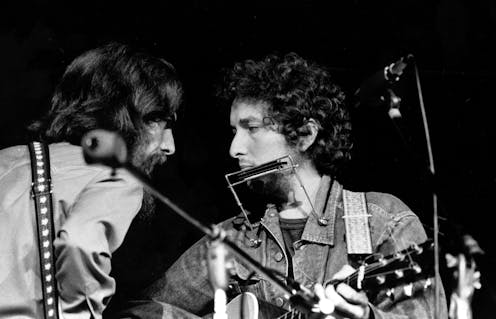riffs, grifters, history – and a terrific playlist
- Written by David McCooey, Professor of Writing and Literature, Deakin University

Bob Dylan, sing-songwriter and Nobel laureate, has spent a career confounding expectations. What, then, should one expect of his new book, The Philosophy of Modern Song? Firstly, “modern song” should read “American modern song”, since almost all of the 66 songs discussed by Dylan are American. And by “modern”, we are talking mid-century, mostly from the 1940s to the 1960s. Stylistically and generically, the songs cover the Great American Songbook, folk, rock’n’roll, country, and so on.
The Philosophy of Modern Song – Bob Dylan (Simon & Schuster, 2022)
Folk Music: A Bob Dylan Biography in Seven Songs – Greil Marcus (Yale University Press, 2022)
In other words, they are the kinds of Americana that can be found on Dylan’s own records. “Philosophy” is the kind of word that can mean anything in publishing contexts, and it should warn the reader not to expect anything so programmatic as, for instance, a history of modern song.
Dylan’s choice of songs forms a mood more than a method. The book is populated by outlaws, grifters, cowboys, gangsters, con artists, and gamblers. There are also references to hucksters like the Colonel Tom Parker (Elvis Presley’s manager) and the 19th-century showman PT Barnum. And to rubes (or those easily duped). So, reader, be aware: this book is concerned with “modern song” on its own terms.














